Abstract
An analysis was conducted of 3373 deaths among 39 546 people employed by the United Kingdom Atomic Energy Authority between 1946 and 1979, the population having been followed up for an average of 16 years. Overall the death rates were below those prevailing in England and Wales but consistent with those expected in a normal workforce. At ages 15-74 years the standardised mortality ratios (SMRs) were 74 for deaths from all causes and 79 for deaths from all cancers. Mortality from only four causes was above the national average--namely, testicular cancer (SMR 153; 10 deaths), leukaemia (SMR 123; 35 deaths), thyroid cancer (SMR 122; three deaths), non-Hodgkin's lymphoma (SMR 107; 20 deaths)--but in none was the increase significant at the 5% level. Half of the authority's employees were recorded as having been monitored for exposure to radiation, their collective recorded exposure being 660 Sv (65 954 rem). Among these prostatic cancer was the only condition with a clearly increased mortality in relation to exposure. Of the 19 men who had a radiation record and died from prostatic cancer at ages 15-74 years, nine had been monitored for several different sources of exposure to radiation. The standardised mortality ratios were 889 (six deaths) in employees monitored for contamination by tritium, 254 (nine deaths) in those monitored for contamination by other radionuclides, and 385 (nine deaths) in those with dosimeter readings totalling more than 50 mSv (5 rem); but the same nine subjects tended to account for each of these significantly raised ratios. Because multiple exposures were common and other relevant information was not available the reason for the increased mortality from prostatic cancer in this population could not be determined and requires further investigation. Excess mortality rates of 2.2 and 12.5 deaths per million person years per 10 mSv (1 rem) were estimated for leukaemia and all cancers, respectively. The confidence limits around these estimates were wide, included zero, and made it unlikely that the International Commission on Radiological Protection's cancer risk coefficients were underestimated by more than 15-fold. Thus despite this being the largest British workforce whose mortality has been reported in relation to low level ionising radiation exposure, even larger populations will need to be followed up over longer periods before narrower ranges of risk estimates can be derived.
Full text
PDF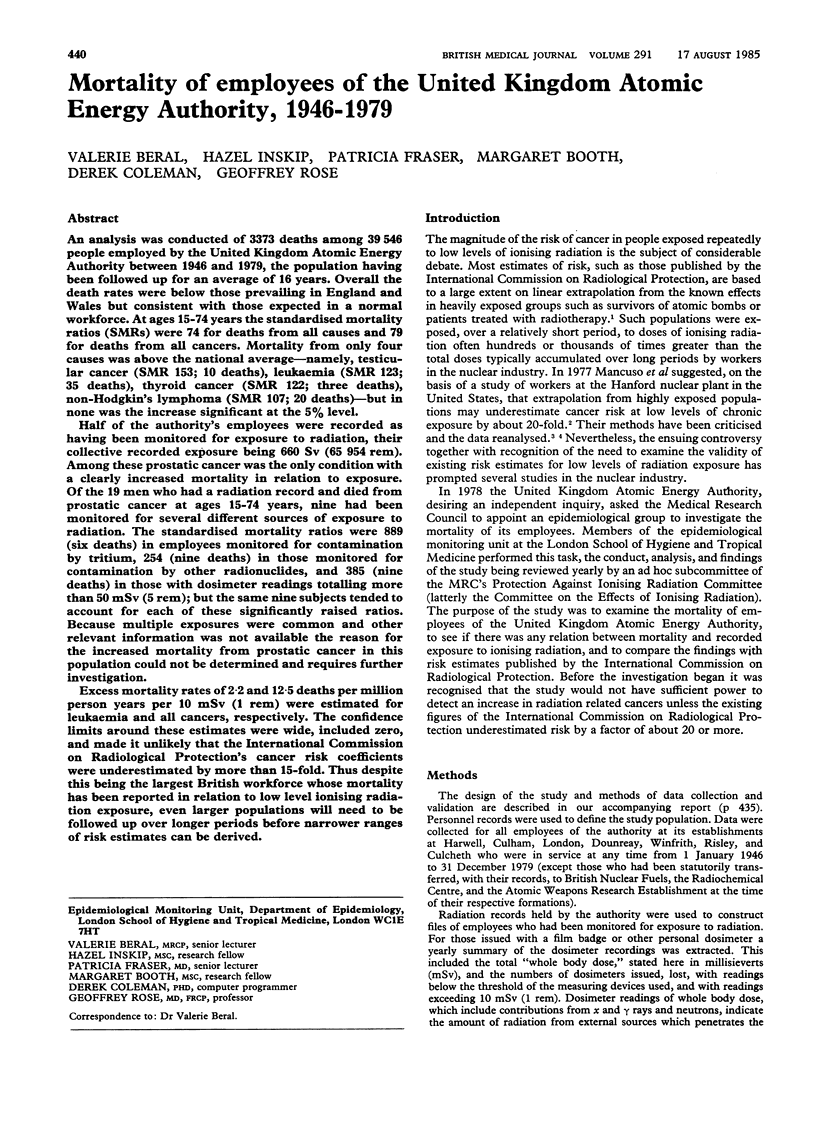
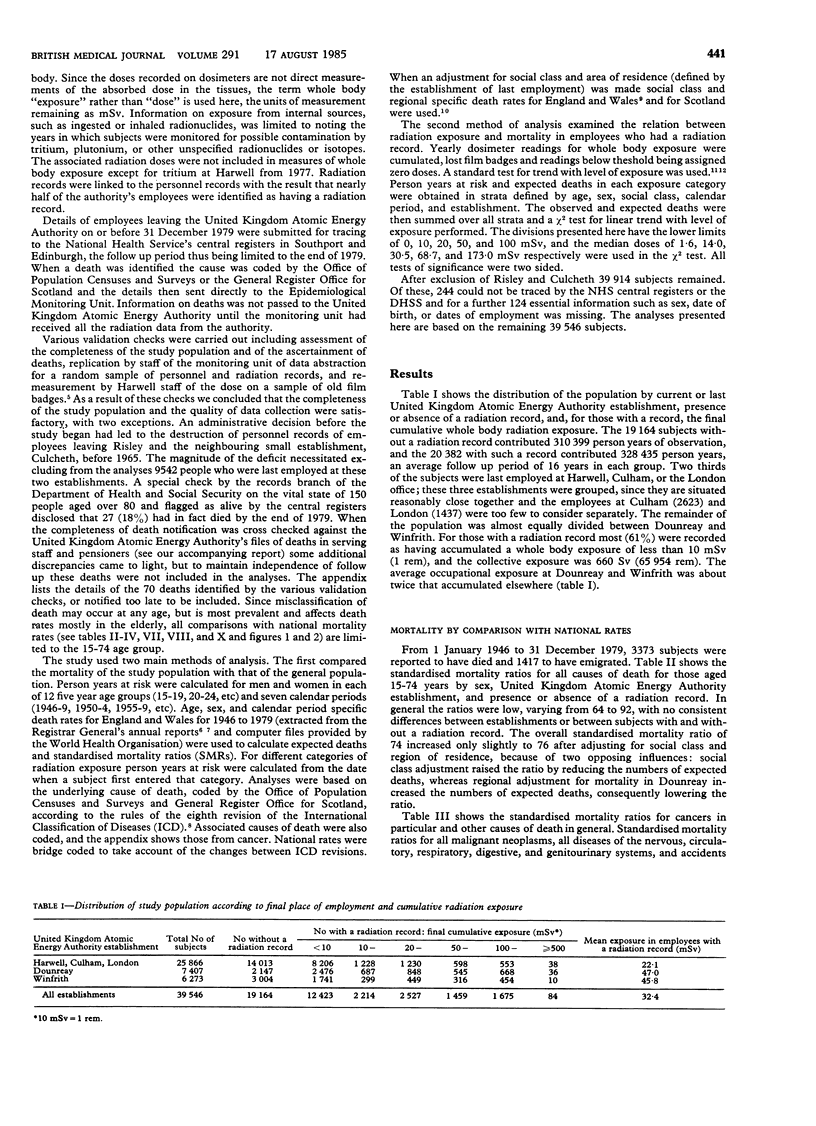
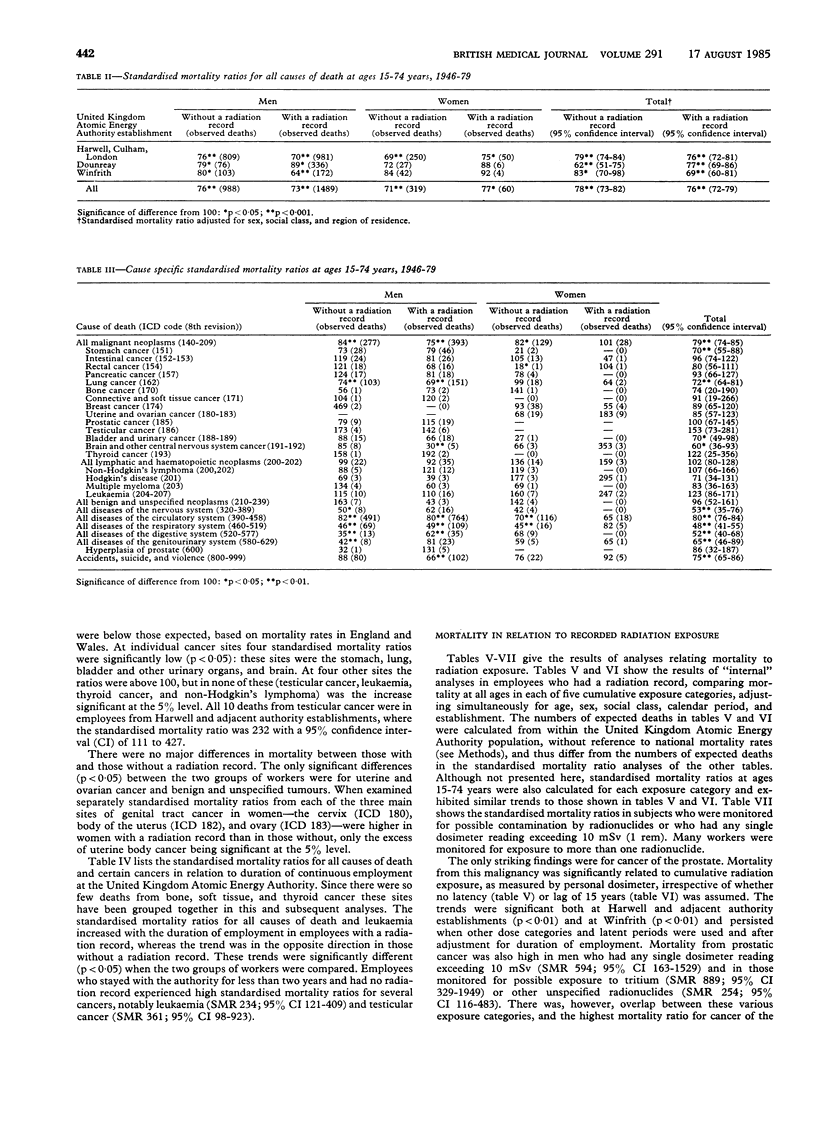
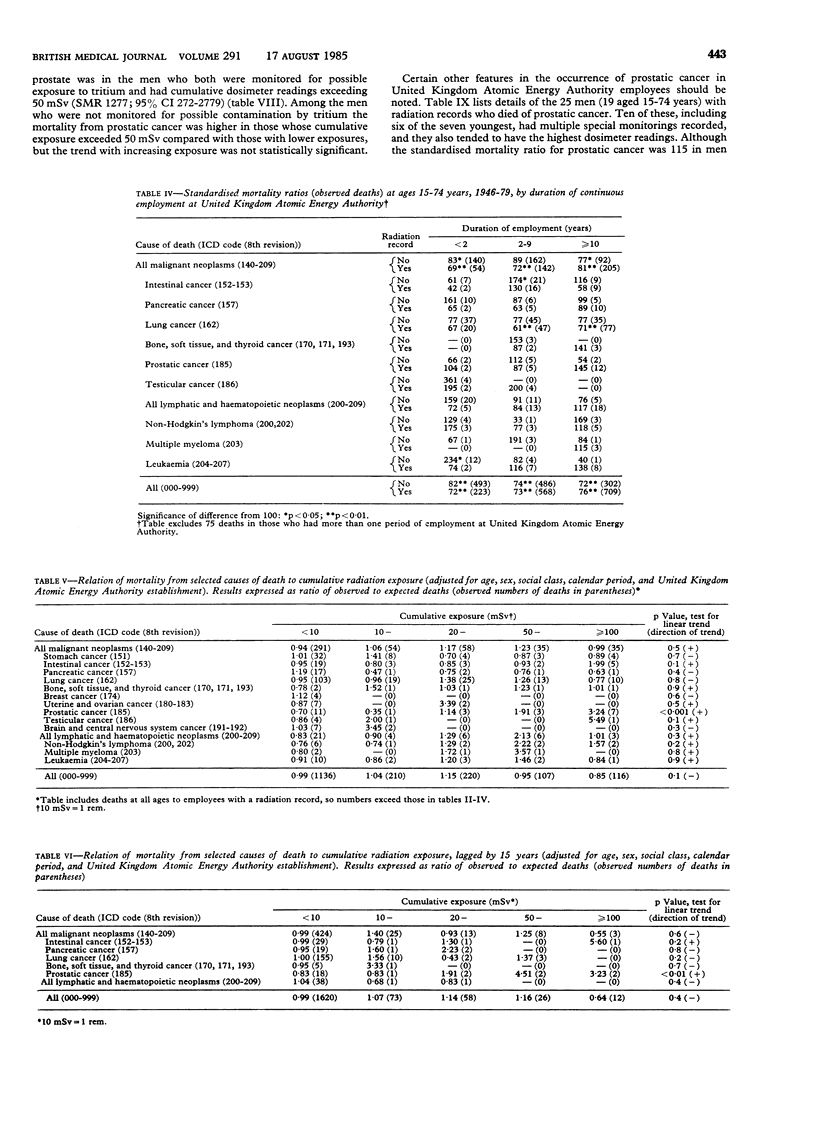
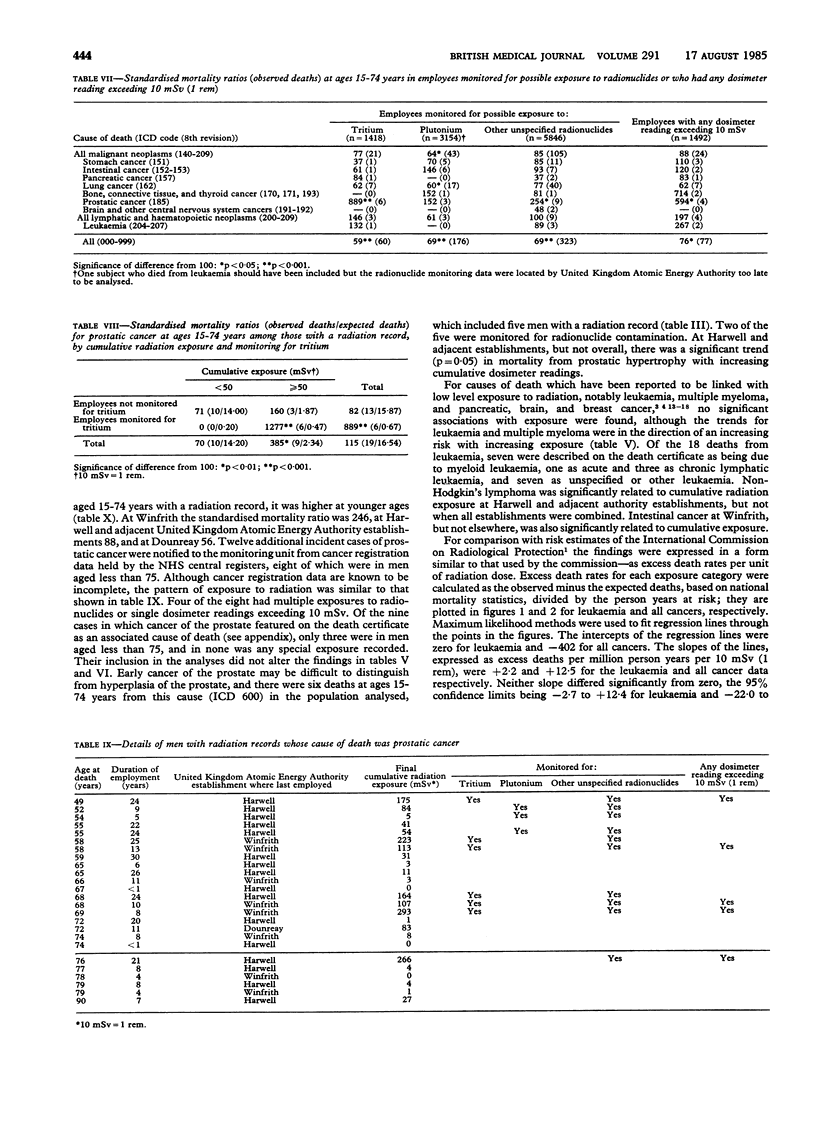
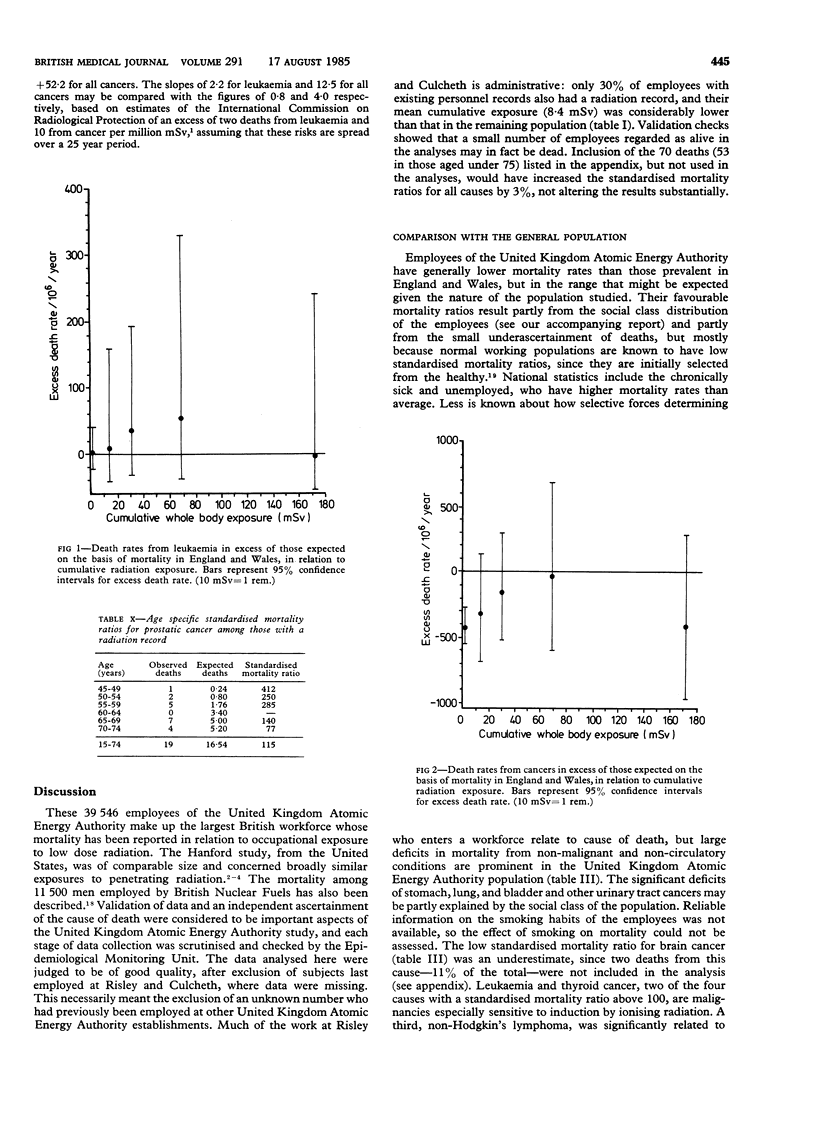
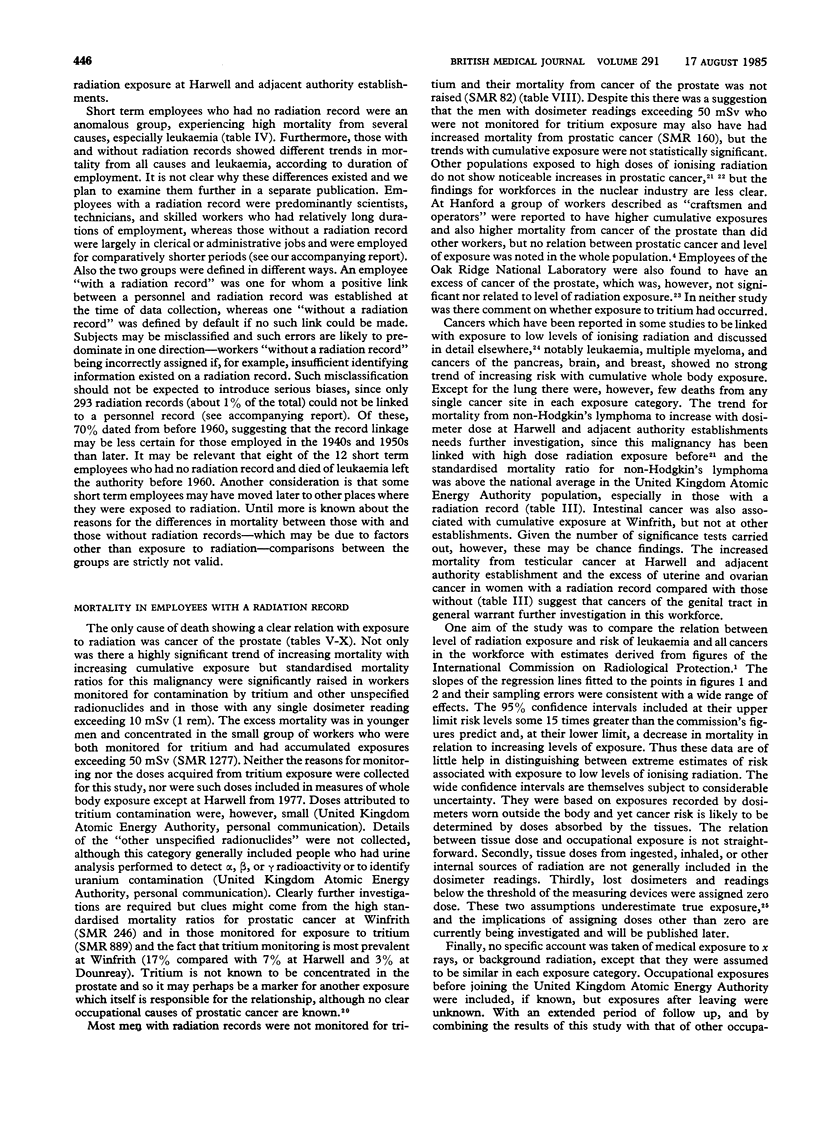
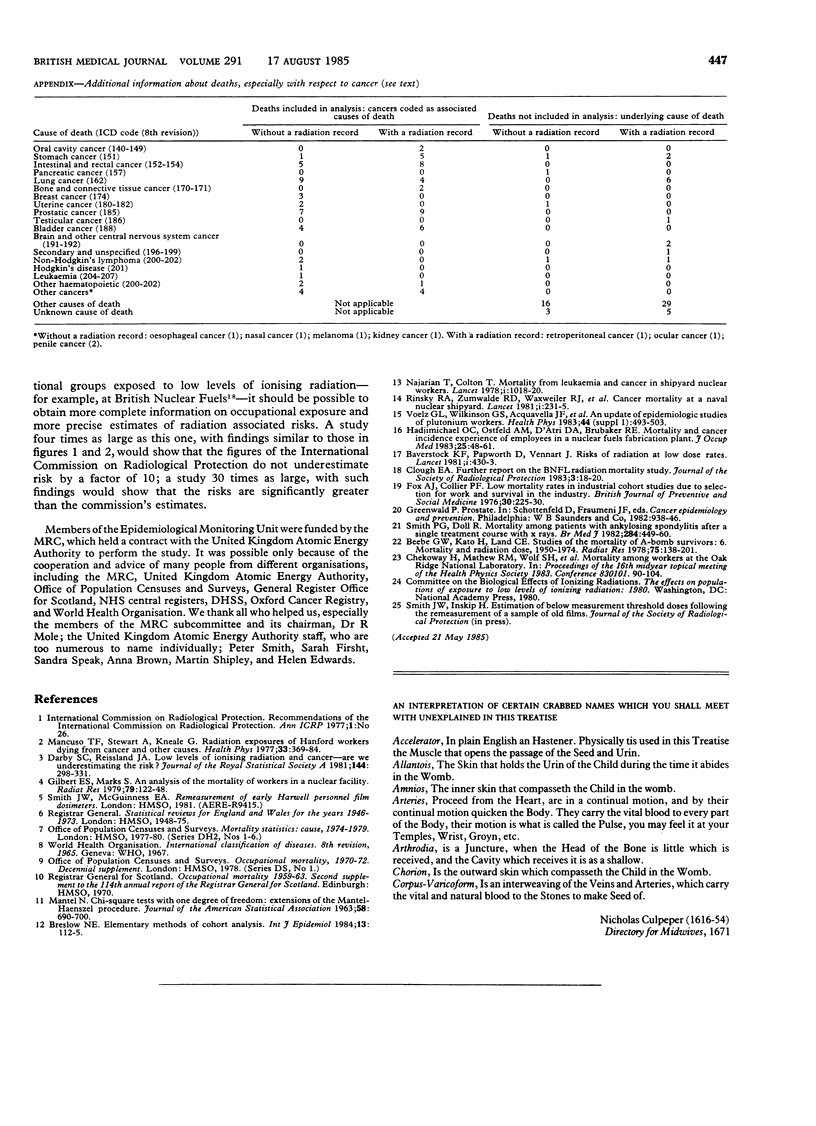
Selected References
These references are in PubMed. This may not be the complete list of references from this article.
- Baverstock K. F., Papworth D., Vennart J. Risks of radiation at low dose rates. Lancet. 1981 Feb 21;1(8217):430–433. doi: 10.1016/s0140-6736(81)91804-3. [DOI] [PubMed] [Google Scholar]
- Beebe G. W., Kato H., Land C. E. Studies of the mortality of A-bomb survivors: 6. mortality and radiation dose, 1950--1974. Radiat Res. 1978 Jul;75(1):138–201. [PubMed] [Google Scholar]
- Breslow N. E. Elementary methods of cohort analysis. Int J Epidemiol. 1984 Mar;13(1):112–115. doi: 10.1093/ije/13.1.112. [DOI] [PubMed] [Google Scholar]
- Fox A. J., Collier P. F. Low mortality rates in industrial cohort studies due to selection for work and survival in the industry. Br J Prev Soc Med. 1976 Dec;30(4):225–230. doi: 10.1136/jech.30.4.225. [DOI] [PMC free article] [PubMed] [Google Scholar]
- Gilbert E. S., Marks S. An analysis of the mortality of workers in a nuclear facility. Radiat Res. 1979 Jul;79(1):122–148. [PubMed] [Google Scholar]
- Hadjimichael O. C., Ostfeld A. M., D'Atri D. A., Brubaker R. E. Mortality and cancer incidence experience of employees in a nuclear fuels fabrication plant. J Occup Med. 1983 Jan;25(1):48–61. doi: 10.1097/00043764-198301000-00015. [DOI] [PubMed] [Google Scholar]
- Mancuso T. F., Stewart A., Kneale G. Radiation exposures of Hanford workers dying from cancer and other causes. Health Phys. 1977 Nov;33:369–385. doi: 10.1097/00004032-197711000-00002. [DOI] [PubMed] [Google Scholar]
- Najarian T., Colton T. Mortality from leukaemia and cancer in shipyard nuclear workers. Lancet. 1978 May 13;1(8072):1018–1020. doi: 10.1016/s0140-6736(78)90741-9. [DOI] [PubMed] [Google Scholar]
- Rinsky R. A., Zumwalde R. D., Waxweiler R. J., Murray W. E., Jr, Bierbaum P. J., Landrigan P. J., Terpilak M., Cox C. Cancer mortality at a Naval Nuclear Shipyard. Lancet. 1981 Jan 31;1(8214):231–235. doi: 10.1016/s0140-6736(81)92083-3. [DOI] [PubMed] [Google Scholar]
- Smith P. G., Doll R. Mortality among patients with ankylosing spondylitis after a single treatment course with x rays. Br Med J (Clin Res Ed) 1982 Feb 13;284(6314):449–460. doi: 10.1136/bmj.284.6314.449. [DOI] [PMC free article] [PubMed] [Google Scholar]
- Voelz G. L., Wilkinson G. S., Acquavella J. F., Tietjen G. L., Brackbill R. N., Reyes M., Wiggs L. D. An update of epidemiologic studies of plutonium workers. Health Phys. 1983;44 (Suppl 1):493–503. doi: 10.1097/00004032-198306001-00048. [DOI] [PubMed] [Google Scholar]


